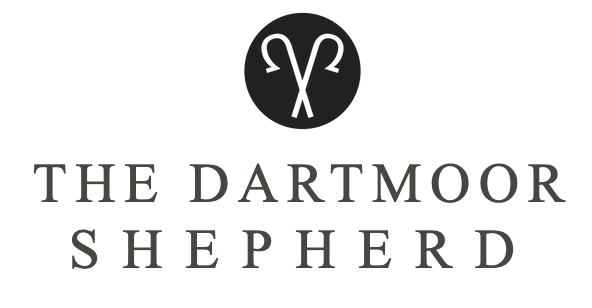As many of you may already know Lewis and I are first generation farmers and rent an assortment of various parcels of pasture across Dartmoor, mainly within the Chagford parish. The current ‘base’ of our business is located at a small stone barn and yard nestled in a 60 acre block of tenanted land on the outskirts of Chagford. Whilst very useful and rather idyllic it is rudimentary with no running water or electricity. We've had to be resourceful in overcoming these challenges, becoming experts at bucketing water from the nearby river Teign and having an assortment of torches that would make many hardware stores or campers envious!


However, with our flock now at approximately 800 sheep and the retail side of our business growing we have had to look into ways of overcoming the day to day issues of not having a stereotypical farm and yard and explore ways we can expand our base so we have the facilities we need to grow our business. Many of these facilities are taken for granted on a stereotypical farm however for us to be able to have running water, electricity and somewhere to jet wash out our trailer for example (without having to do so on friends and families driveways) would be not far short of life changing!

This has always seemed a somewhat insurmountable hurdle to us until we were lucky enough to host a talk from the Rural Development Growth Programme (RDPE) via the incredibly supportive and useful Dartmoor Hill Farm Project. This presentation hosted in our office space in Chagford in December 2019 saw a full house of fellow Dartmoor business owners enjoying cakes, scones and tea whilst listening to the opportunities for rural businesses under the RDPE grant scheme. It really ignited the interest of Lewis and I as we saw it as the best chance to be able to achieve a base from which our business could grow.
Fast forward over the many months of trawling through the extensive grant application process and the task of gaining planning permission with the help of the Dartmoor Hill Farm Project, Henry Plumb Foundation and friends we were awarded a grant to begin building in January this year. Since then we have been ably assisted by O’Brien Van der Steen architects here in Chagford who have helped achieve planning permission for our vision and compose plans for our new site.
With the great support of our friends (the landowners) work commenced in January 2021 to build two new buildings. The first being an agricultural style barn to be used for shearing and wool handling/processing. The second (which we are very excited about) will be a workshop/studio space where we will be able to begin producing our own product range here on Dartmoor, stitched within the fields where our flocks graze. This is not only a great opportunity for us in expanding The Dartmoor Shepherd but also for reducing our production process from miles to yards. We are excited at the prospect of growing our team to help us with crafting our own products and assisting us in organising and expanding The Dartmoor Shepherd.

This project will finally allow us to open our gates to all of you as we look forward to being able to host lambing open days and other events throughout the year which is something we’ve been wanting to do for a long time.
In the design of our new barn and workshop, sustainability has been a key factor in our decision making. Within the design we are including an air source heat pump, a log burner that will run off wood sourced from the traditional management of our hedgerows, the use of locally sourced wood, granite and materials, as well as the establishment of new orchards, tree planting and hedges throughout the site, all to minimise our carbon footprint.

In developing our approach for the future we have looked to the past. To the age of pre industrial farming when our native Dartmoor sheep breeds were as much part of the landscape as the granite tors and rugged hills they lived on in harmony with nature. Whilst looking at our own land and contemplating the past we dug out the records of the field networks dating back to 1836 with the help of the Chagford History Society. Having only used these maps before to learn the old field names (which we now use every day to plan our farming year) we noticed that many of our fields have been lost as a result of the post war industrialisation of agriculture. It is now widely agreed that this post war industrialisation was a pivotal point in Britain in terms of the loss of habitats and wildlife species across the UK. From studying the maps from 1836 it became clear to us that many of the hedgerows separating the fields on our land have been removed at some point, resulting in larger fields, less diversity and fewer wildlife corridors.


Therefore we have used this project as an opportunity to begin restoring our land to its former wildlife rich glory. We are using surplus soil from the excavation of the site to reinstate the 19th century hedgerows and fields. We are now in the process of recreating three new Devon hedgerows on our land totalling a distance of just over 1/4 of a kilometre with plans to create more in the future. These hedgerows will not only provide a key habitat in themselves but also a network of wildlife corridors across our land. A bit like the M5 for voles, shrews, foxes, rabbits and insects etc. linking up our areas of woodland, meadows and river banks!
By creating more hedgerows it inevitably means more fields which help us with our holistic grazing approach and thus greatly improves the quality of the soil and pasture on our land, which is now more vital than ever to us because we have joined the Pasture for Life association.


